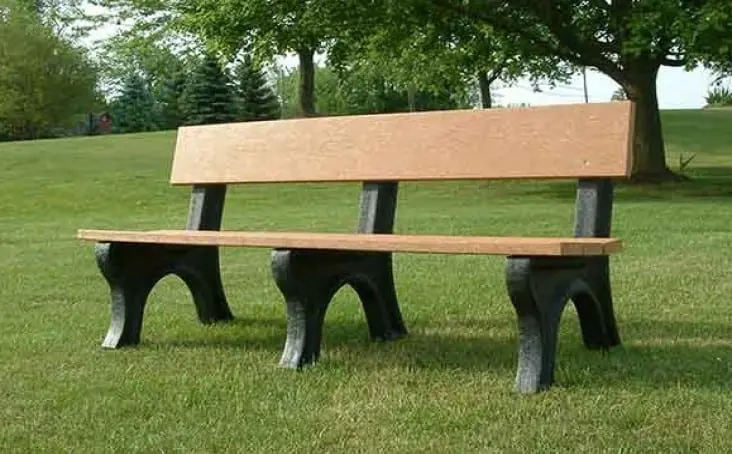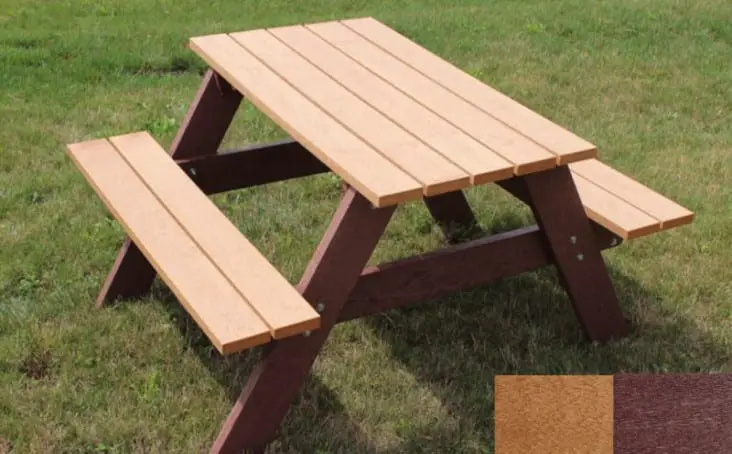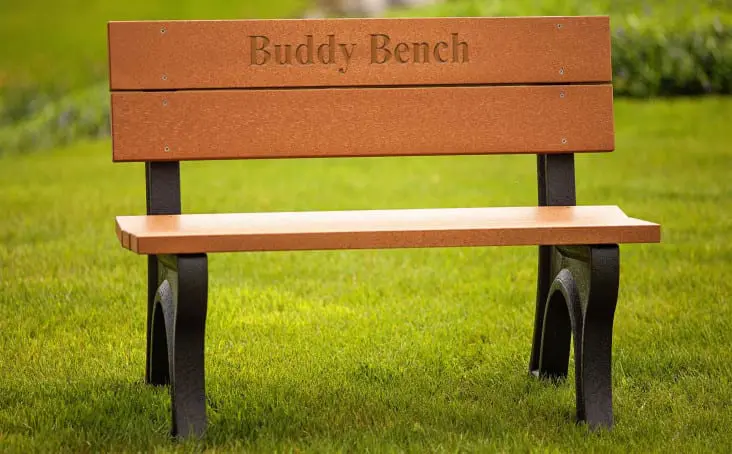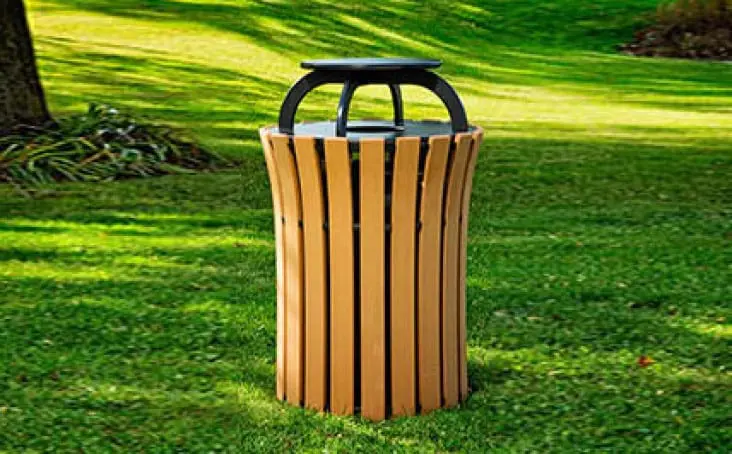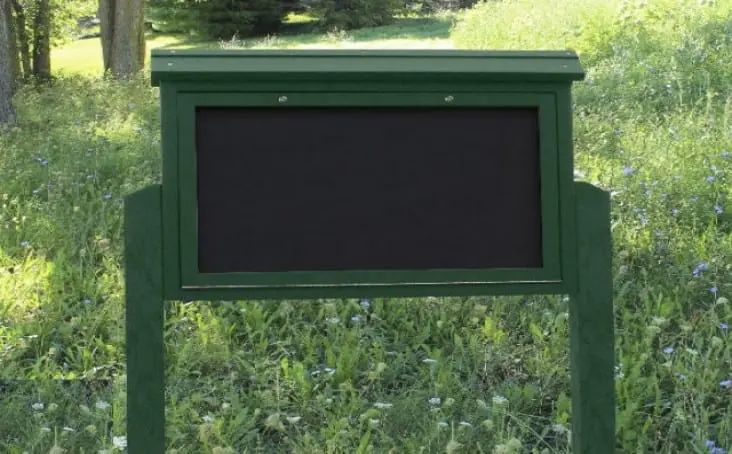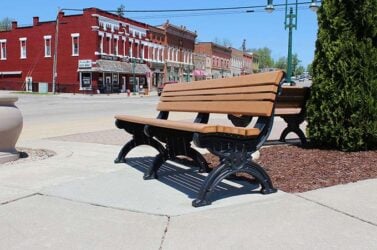

As the importance of environmental sustainability grows, so does the concept of greenscaping. Greenscaping involves transforming outdoor spaces into eco-friendly environments that promote biodiversity, conserve resources, and enhance people’s overall well-being.
We’re here to share what greenscaping is, its benefits, and how to convert existing outdoor spaces, such as schools, parks, and businesses, into thriving greenscapes.
What is Greenscaping?
Greenscaping, also known as green landscaping or sustainable landscaping, involves designing and maintaining outdoor spaces in an environmentally responsible manner. It goes beyond traditional landscaping by incorporating eco-friendly principles and techniques to create sustainable and thriving landscapes.
At its core, greenscaping is about harmonizing human activities with nature, recognizing the importance of preserving and enhancing the environment while meeting our needs for functional and aesthetically pleasing outdoor spaces. Whether it’s a park, school, home, or business, greenscaping can be applied to various outdoor settings.
One of the critical aspects of greenscaping is the use of native plants. Native plants naturally occur in a specific region and have adapted to the local climate, soil conditions, and wildlife. By incorporating native plants into greenscapes, we can create ecosystems that support local biodiversity, provide habitats for wildlife, and require minimal maintenance.
In addition to native plant selection, greenscaping focuses on water conservation. This includes installing rain gardens, using drip irrigation systems, and collecting rainwater for irrigation purposes. Building your soil with compost or mulch will reduce evaporation and help the soil hold water so it can be used by the plants. Minimize use of fertilizers and aerate lawns, and use pavers or gravel in walkways so rain can soak into the ground. This helps prevent runoff into our waterways where fertilizers contribute to toxic algae blooms. By reducing water usage and maximizing its efficiency, greenscapes can help preserve water resources.
Another critical component of greenscaping is soil health. Healthy soil provides a solid foundation for plant growth and reduces the need for synthetic fertilizers and pesticides. By enriching the soil with organic matter, such as compost, greenscapers can improve soil structure, fertility, and water retention capacity, promoting healthier and more resilient landscapes. Greenscaping also takes advantage of the environmental impact of outdoor spaces to maximize energy efficiency. This can be achieved through strategic tree and shrub placement to provide natural shade and windbreaks, reducing the need for excessive energy consumption for cooling and heating.
Greenscaping is a holistic approach to outdoor space design that prioritizes environmental sustainability, biodiversity conservation, and human well-being.
The Benefits of Greenscapes
Greenscaping offers numerous benefits for the environment and the people who interact with these outdoor spaces. Here are some of the critical advantages of incorporating greenscapes into homes, parks, schools, and businesses.
Biodiversity Conservation
Greenscapes play a vital role in supporting and promoting biodiversity. By using native plants and creating diverse habitats, greenscapes attract a variety of plant and animal species, including beneficial insects, birds, and pollinators. This helps to restore and maintain the balance of local ecosystems, contributing to the preservation of biodiversity. Nature has her own pest control and greenscaping reduces the use of pesticides which may also kill non-target species.
Improved Air and Water Quality
Well-designed greenscapes have a positive impact on air and water quality. Trees and plants absorb carbon dioxide and release oxygen, helping to reduce air pollution and mitigate climate change.
Additionally, greenscapes act as natural filters, preventing pollutants from entering water bodies and replenishing groundwater supplies. This results in cleaner air and water for the surrounding communities.
Energy Efficiency
Greenscapes contribute to energy efficiency by providing natural shade and windbreaks. Strategically planting trees and shrubs around buildings helps regulate temperatures and reduces the need for excessive air conditioning in the summer. Have you noticed how many high-rise buildings and companies are creating ‘green roofs’?
These same trees act as windbreaks during the winter months, minimizing heat loss and lowering heating costs. By reducing energy consumption, greenscapes contribute to a more sustainable and cost-effective approach to outdoor space management.
Enhanced Aesthetics and Well-being
Greenscapes offer visually appealing and inviting outdoor environments. Greenery, trees, and blooming flowers create a sense of natural beauty, tranquility, and serenity.
Exposure to nature and green spaces positively impacts mental health, reducing stress, improving mood, and enhancing overall well-being. Scan the internet and there’s any number of studies and articles citing the actual need for greenscapes for physical and mental health. Greenscapes also provide opportunities for recreation and physical activities, promoting active lifestyles and community engagement. In fact, the NRPA, National Recreation and Parks Association, has published research documenting that parks are essential for healthy communities.
Economic Benefits
Greenscapes can have positive economic effects as well. Well-designed outdoor spaces attract visitors, boost property values, and contribute to economic development.
Parks and greenscapes are often sought-after features for communities, attracting residents, businesses, and tourists. Additionally, greenscapes can help reduce long-term maintenance and utility costs through sustainable practices such as water conservation and energy efficiency.
Designing Your Own Greenscape
Designing a greenscape involves thoughtful planning and consideration of various factors to create a harmonious and sustainable outdoor space.
Here are some critical steps to guide you in designing your greenscape:
Site Analysis
Begin by thoroughly analyzing the site where you plan to create your greenscape. Evaluate factors such as soil type, drainage patterns, sun exposure, and existing vegetation. Your local Cooperative Extension or garden supply may be helpful in this area. Understanding the site’s characteristics will help you make informed decisions about plant selection, layout, and other design elements.
Native Plant Selection
Choose native plant species well-suited to your region’s climate, soil conditions, and available sunlight. Native plants have adapted to the local environment, requiring less water, fertilizer, and maintenance. They also provide essential habitat and food sources for local wildlife. Plus, some plants are ‘buddies’ in nature and contribute to the others well-being by supplying natural nutrients or pest control.
Select a diverse range of plants that offer different textures, colors, and bloom times to create visual interest throughout the year.
Water Conservation
Incorporate water-efficient practices into your greenscape design. Consider installing rain gardens or bioswales, which collect and filter rainwater runoff, allowing it to infiltrate the soil naturally.
Utilize drip irrigation systems that deliver water directly to the plant’s root zone, reducing water waste. Use compost or mulch in planting areas to retain moisture. Harvest rainwater in barrels or cisterns to supplement irrigation needs during dry periods. Mulching around plants also helps suppresses weed growth.
Soil Health
Prioritize soil health in your greenscape design. Incorporate organic matter, such as compost, into the soil to improve its structure, fertility, and water-holding capacity. Healthy soil promotes vigorous root growth, reduces erosion, and enhances plant health and resilience.
Conduct regular soil testing to monitor nutrient levels and pH, making any necessary changes to ensure optimal plant growth.
Functional Elements
Consider the desired functionality of your greenscape and incorporate appropriate elements. This may include recyclable outdoor benches, picnic tables, or outdoor recreational features.
Integrate these elements into the design while maintaining a balance with the natural elements of the greenscape.
Maintenance Considerations
Design your greenscape with long-term maintenance in mind. Select plants that require minimal watering, pruning, fertilizing, and pesticide use.
Plan for easy access to irrigation systems, composting areas, and other maintenance requirements. Regularly monitor the health of plants and address any issues promptly to ensure the long-term success of your greenscape.
By following these steps and incorporating sustainable design practices, you can create a beautiful, resilient, and environmentally friendly greenscape that enhances the natural surroundings while providing a welcoming and enjoyable outdoor space.
Greenscape-Friendly Equipment and Accessories
When selecting greenscape-friendly equipment and accessories for your outdoor space, there are several factors to consider. By choosing eco-friendly options, you can further enhance the sustainability and functionality of your greenscape.
Here are some key considerations.
Use of Recycled and Sustainable Materials
Look for outdoor furniture, structures, and accessories that are made from recycled or sustainable materials. For example, here at Polly Products, we offer a wide range of greenscape-friendly outdoor furniture made from recycled plastic, such as outdoor benches, tables, and recycling bins.
These products reduce waste and provide durable and low-maintenance options for seating, tables, benches, and more.
Water-Efficient Irrigation Systems
Opt for water-efficient irrigation systems that minimize water waste. Drip irrigation systems, for example, deliver water directly to plant roots, significantly reducing water usage compared to traditional overhead sprinklers. Use them with a timer to turn on in early morning.
Consider using smart irrigation controllers that adjust watering schedules based on weather conditions and soil moisture levels, further optimizing water efficiency.
Solar-Powered Lighting
If you must illuminate parts of your greenscape, such as walkways, choose solar-powered lighting options. Solar lights harness the sun’s energy to provide illumination during the evening hours. They’re energy-efficient, cost-effective, and eliminate the need for electrical wiring or batteries. However, you should minimize artificial lighting because it disturbs wildlife and natural ecosystems.
Composting and Recycling Stations
Incorporate composting and recycling stations into your greenscape design. Provide clearly labeled bins for organic waste and recyclable materials, encouraging visitors to dispose of waste responsibly. Composting organic matter helps reduce landfill waste and creates nutrient-rich compost that can be used to nourish your greenscape.
Native Planting and Wildlife Habitat Features
Consider integrating elements that support native plants and provide habitats for wildlife. Install birdhouses, bee hotels, or butterfly gardens to attract and support local wildlife populations. These features enhance biodiversity and contribute to the ecological balance of your greenscape.
Educational Signage
Include educational signage throughout your greenscape to raise awareness about the importance of sustainability and environmental conservation. Inform visitors about the native plants, wildlife species, and eco-friendly practices implemented in the greenscape.
This promotes environmental education and encourages visitors to adopt similar practices in their own lives. By selecting greenscape-friendly equipment and accessories, you can align your outdoor space with eco-friendly principles, promoting sustainability, conservation, and environmental stewardship.
Using recycled materials, water-efficient irrigation, solar-powered lighting, composting stations, native planting, wildlife habitats, and educational signage, all contribute to a greener and more sustainable greenscape.
Create a Greenscape with Polly Products
Creating a greenscape promotes sustainability and environmental stewardship. By incorporating Polly Products’ greenscape-friendly outdoor furniture and accessories made from recycled plastic, you can take your greenscape to the next level of eco-friendliness. In fact, we created our GreenScapes collection for this very reason. At Polly Products, we offer a wide range of durable, low-maintenance, and visually appealing options. Discover our eco-friendly outdoor furniture and accessories here.
#greenscaping #environmentalstewardship #sustainableparkdesign

